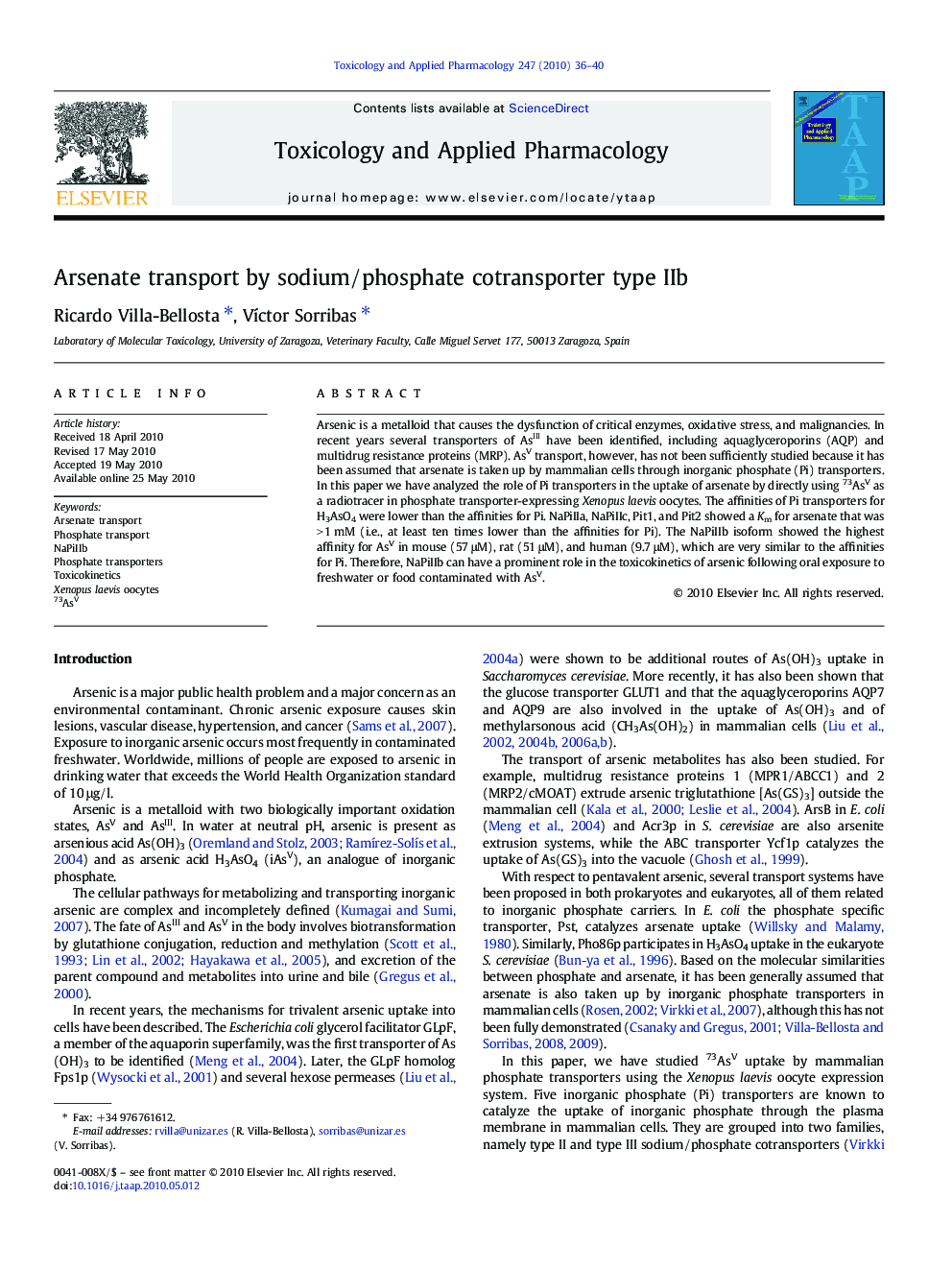| Article ID | Journal | Published Year | Pages | File Type |
|---|---|---|---|---|
| 2570215 | Toxicology and Applied Pharmacology | 2010 | 5 Pages |
Arsenic is a metalloid that causes the dysfunction of critical enzymes, oxidative stress, and malignancies. In recent years several transporters of AsIII have been identified, including aquaglyceroporins (AQP) and multidrug resistance proteins (MRP). AsV transport, however, has not been sufficiently studied because it has been assumed that arsenate is taken up by mammalian cells through inorganic phosphate (Pi) transporters. In this paper we have analyzed the role of Pi transporters in the uptake of arsenate by directly using 73AsV as a radiotracer in phosphate transporter-expressing Xenopus laevis oocytes. The affinities of Pi transporters for H3AsO4 were lower than the affinities for Pi. NaPiIIa, NaPiIIc, Pit1, and Pit2 showed a Km for arsenate that was > 1 mM (i.e., at least ten times lower than the affinities for Pi). The NaPiIIb isoform showed the highest affinity for AsV in mouse (57 μM), rat (51 μM), and human (9.7 μM), which are very similar to the affinities for Pi. Therefore, NaPiIIb can have a prominent role in the toxicokinetics of arsenic following oral exposure to freshwater or food contaminated with AsV.
